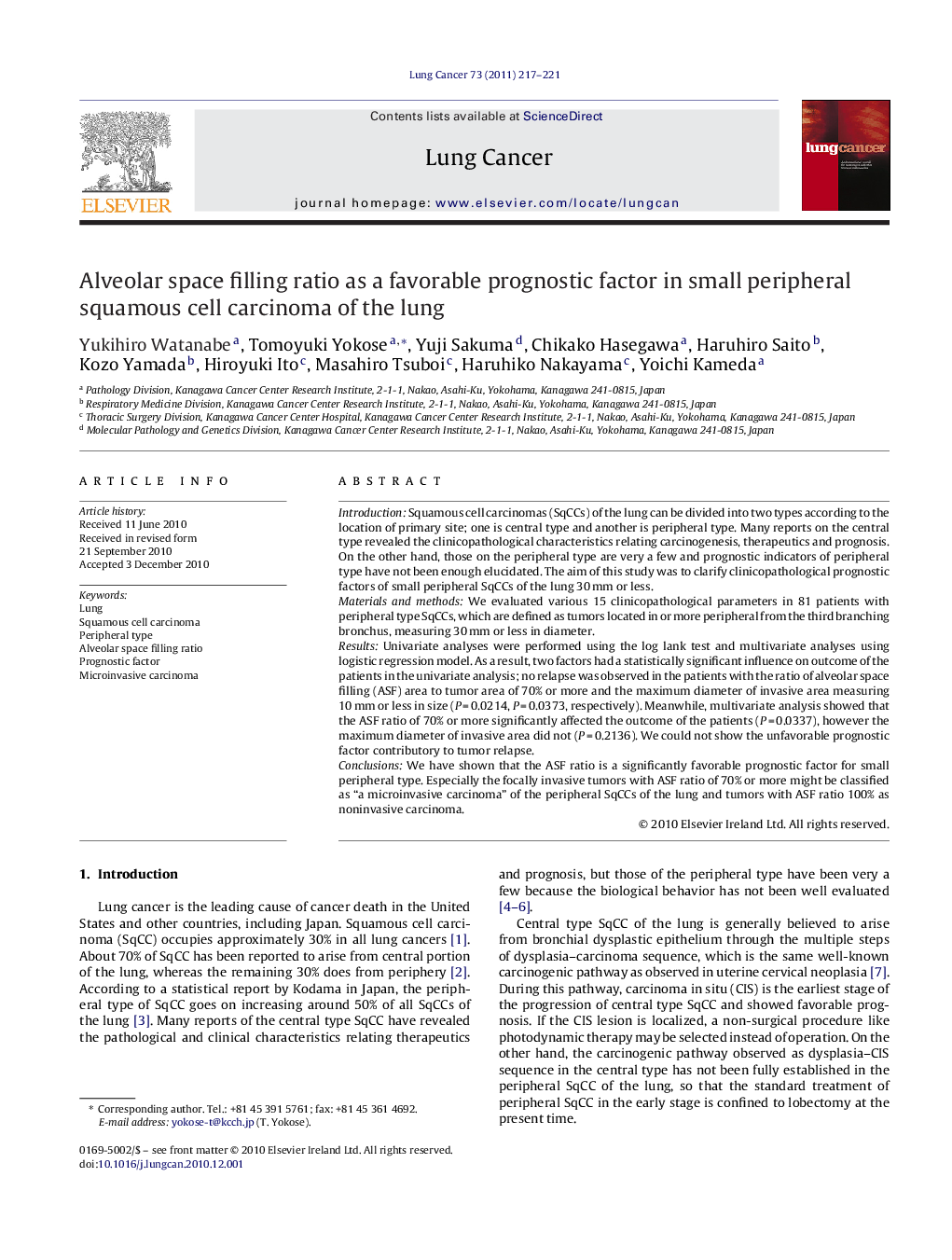| Article ID | Journal | Published Year | Pages | File Type |
|---|---|---|---|---|
| 2141190 | Lung Cancer | 2011 | 5 Pages |
IntroductionSquamous cell carcinomas (SqCCs) of the lung can be divided into two types according to the location of primary site; one is central type and another is peripheral type. Many reports on the central type revealed the clinicopathological characteristics relating carcinogenesis, therapeutics and prognosis. On the other hand, those on the peripheral type are very a few and prognostic indicators of peripheral type have not been enough elucidated. The aim of this study was to clarify clinicopathological prognostic factors of small peripheral SqCCs of the lung 30 mm or less.Materials and methodsWe evaluated various 15 clinicopathological parameters in 81 patients with peripheral type SqCCs, which are defined as tumors located in or more peripheral from the third branching bronchus, measuring 30 mm or less in diameter.ResultsUnivariate analyses were performed using the log lank test and multivariate analyses using logistic regression model. As a result, two factors had a statistically significant influence on outcome of the patients in the univariate analysis; no relapse was observed in the patients with the ratio of alveolar space filling (ASF) area to tumor area of 70% or more and the maximum diameter of invasive area measuring 10 mm or less in size (P = 0.0214, P = 0.0373, respectively). Meanwhile, multivariate analysis showed that the ASF ratio of 70% or more significantly affected the outcome of the patients (P = 0.0337), however the maximum diameter of invasive area did not (P = 0.2136). We could not show the unfavorable prognostic factor contributory to tumor relapse.ConclusionsWe have shown that the ASF ratio is a significantly favorable prognostic factor for small peripheral type. Especially the focally invasive tumors with ASF ratio of 70% or more might be classified as “a microinvasive carcinoma” of the peripheral SqCCs of the lung and tumors with ASF ratio 100% as noninvasive carcinoma.
